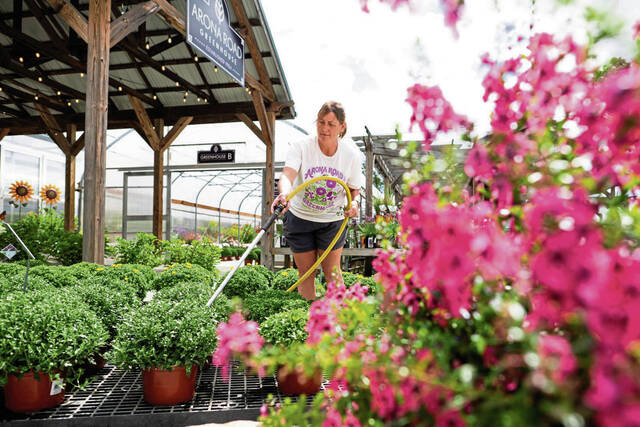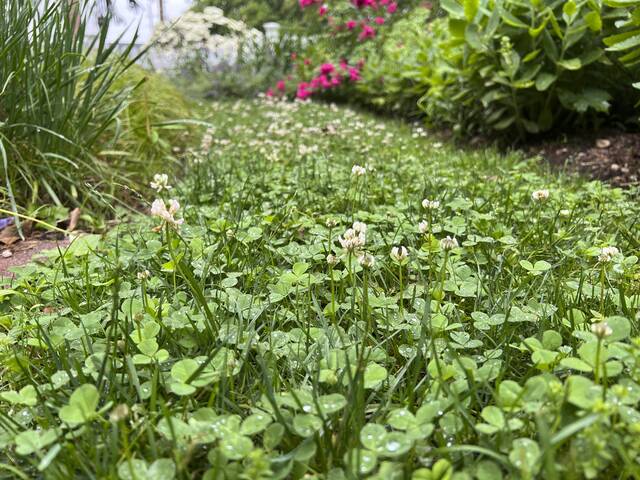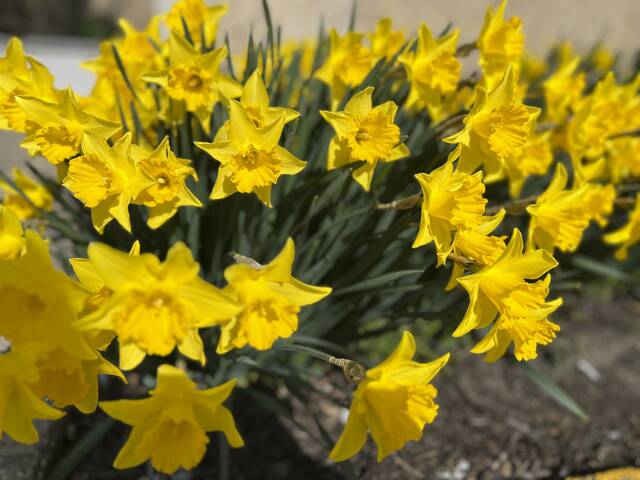Question: I have two gorgeous, big burning bushes in my yard that are really, really in need of trimming. I don’t want to trim before they put on their autumn show, but I need to know when is the best time to trim and how much can I really cut back. I am so afraid I’ll damage them if I cut too much. Thank you so much in advance.
Answer: Burning bush (Euonymus alatus) is a common deciduous shrub that’s best known for its brilliant red fall color. While it does produce flowers in late spring, the blooms are small, green and very nondescript.
Burning bush is tolerant of many different growing conditions and soil types, which has lead to its success in home landscapes. However, burning bush is a native of Asia and is considered an invasive plant in many parts of the United States due to its ability to reseed. It’s been listed as an invasive plant here in Pennsylvania by our Department of Conservation and Natural Resources since 1994, because it quickly establishes itself in woodlands when birds eat and distribute the seeds. Burning bushes often go on to outcompete and displace native species.
That being said, the plant is still sold in garden centers and is widely planted throughout the state. I’m not telling you this to make you feel badly about growing burning bushes, but rather to make you aware of this plant’s negative role in the ecosystem.
All that being said, their ease of care is the main reason burning bush is so popular. Unlike many other shrubs, they’re not fussy when it comes to pruning practices and you have little to worry about. Truthfully, you can cut a burning bush clear down to the ground and it will resprout without hesitation (which is a trait that makes them very difficult to eradicate in woodlands where they run rampant). The best pruning time for burning bushes is in the early spring, just before active growth begins. Here in Pennsylvania, that’s typically in mid- to late March.
You can approach this task one of two ways. The first is to selectively thin the plant by following ⅓ to ½ of the branches from their outermost points down into the shrub where they meet the next branch. Cut each branch off at that meeting point. This will thin out the shrub, and if you choose the tallest branches for removal, it will also shorten the shrub’s height.
The other option is do to a hard, rejuvenative pruning. While this is mentally and physically challenging, it’s quite good for this particular shrub. Cut the entire plant down to ⅓ of its original height (and don’t be shy about it). Be sure to cut each branch off where it meets another branch. This retains the shrub’s natural growth habit and keeps it from looking “hacked.” This type of hard pruning encourages lots of new growth that develops that beautiful red in the autumn. Hard, rejuvenative pruning can be done as frequently as every four or five years.
As always, when pruning plants, be sure your pruners, loppers and pruning saw are sharp and clean before you start the job. Disinfect the blades with a spray of Lysol or use a sanitizing wipe for the job. Another option is to clean the blade with rubbing alcohol, hydrogen peroxide or a 10% bleach solution.








